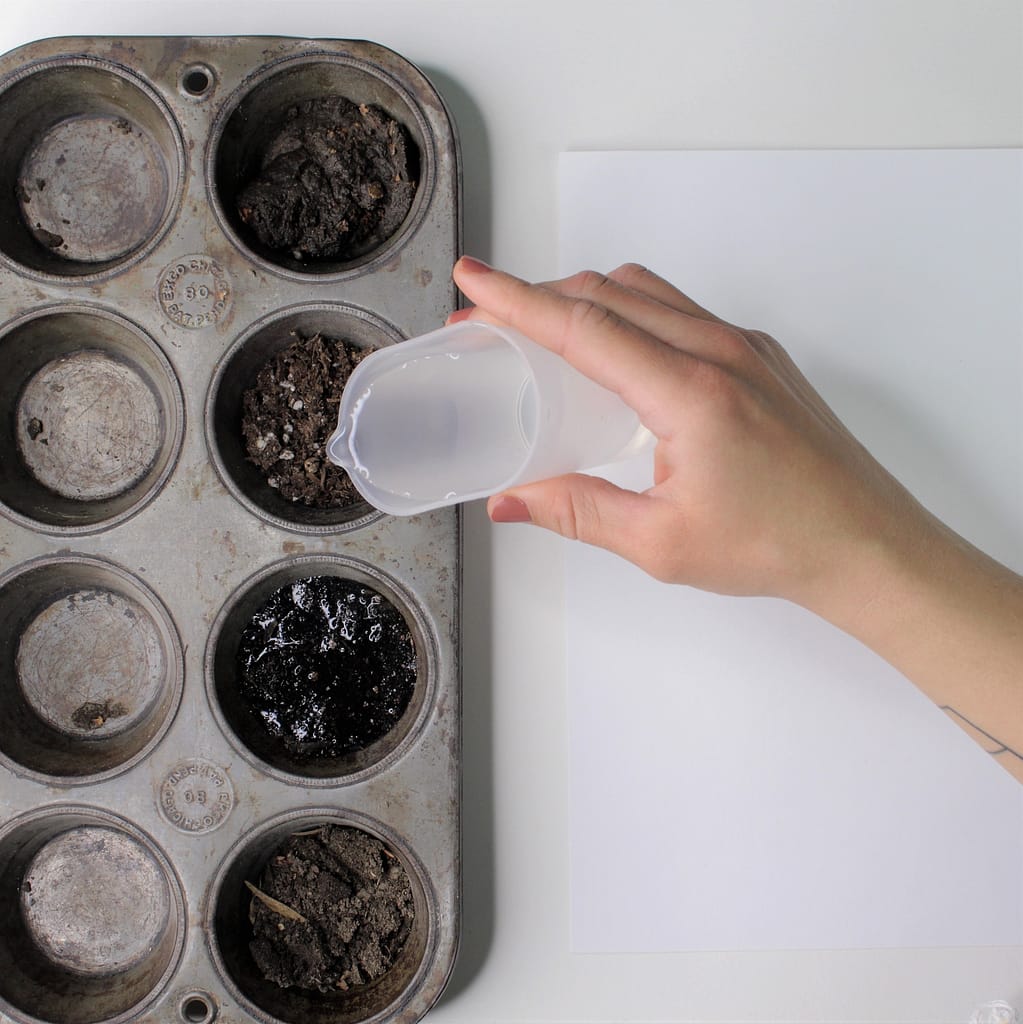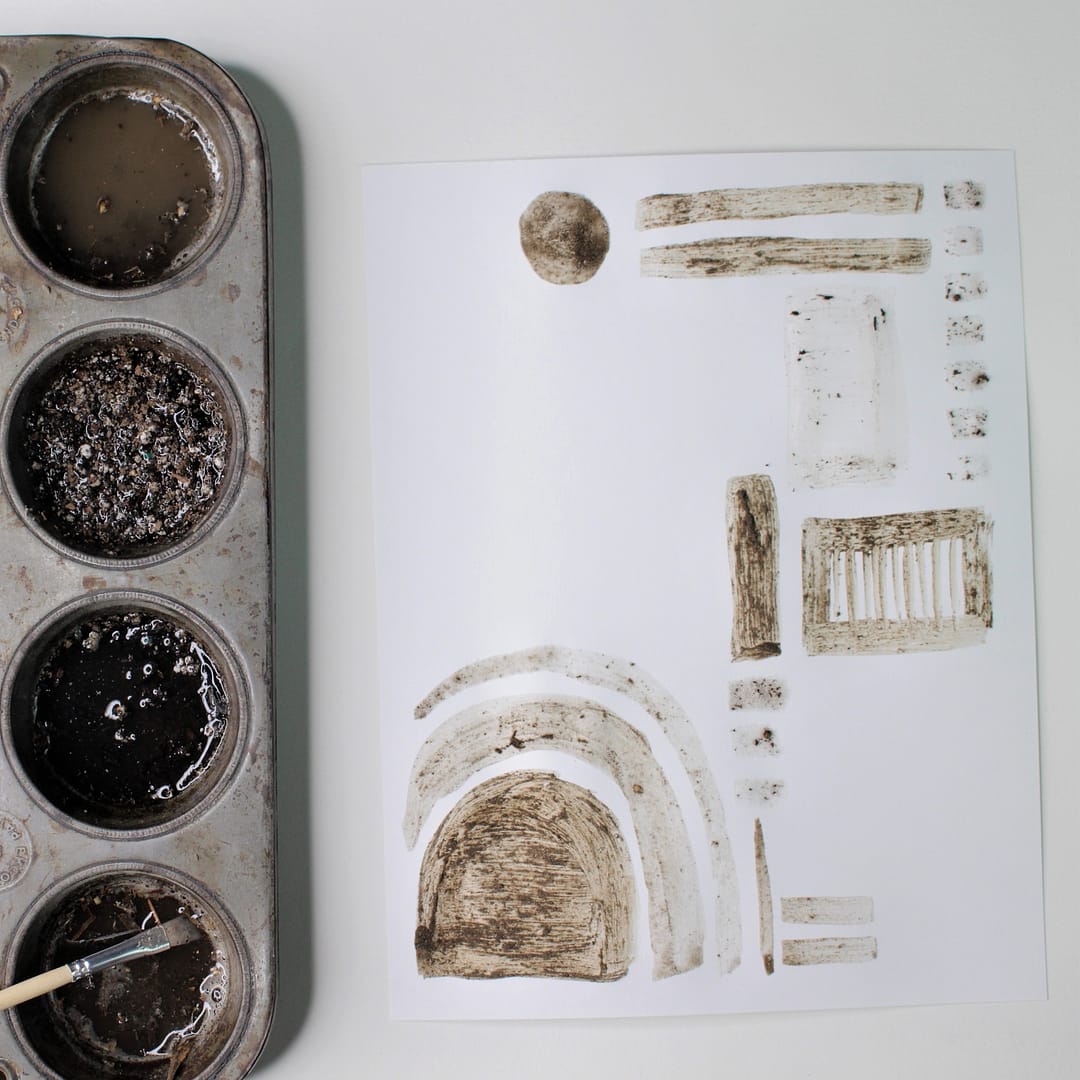Make paint using an ingredient found right outside your front door – mud!
This forest-school inspired art project is
eco-friendly and can be used as a way to introduce your child to ancient art.
In ancient times, paint was created by crushing rocks and minerals into a powder and mixing this powder with a liquid to bind it all together.
Your child can follow in ancient artists’ footsteps and create paint of their own using a material found right outside your front door- mud.
I recommend this project be done outdoors from start to finish. It will keep the mess outside and give you and your children more time to enjoy the fresh air.
Supplies:
- Container for collecting and mixing mud paint (I recommend using an old muffin tin)
- Paintbrush (I recommend a wide-bristled brush for this project)
- Water
- Heavy drawing paper or cardstock
- Dirt of various hues and shades
- Masking tape (optional, to secure your paper if working outdoors)
Directions:
- Gather dirt of various hues and shades.
- Place a few tablespoons of dirt into smaller containers to create your mud paint. If using a muffin tin, put a few tablespoons into the muffin wells.
- Add a few tablespoons of water to the dirt. Then mix the dirt and water together to create mud of a “paintable” consistency. Too thin? Add more dirt. Too thick? Add more water.
- Use a paintbrush to apply your mud paint onto your paper. I found that a wide-bristled brush worked best for this project.




Where you found your dirt can have a huge impact on its color and texture profile. Did you find your soil on a river bank, landscaped lawn, or the forest floor? A great science extension for this project could be researching why different soils have a different appearance or learning about the layers of the earth.
Looking for a project to continue the conversation on ancient artwork? Check out this full lesson plan on Stone Age cave paintings.
Looking for another DIY paint recipe that uses ingredients you probably already have on hand? Read this blog post on a paint made from coffee grounds.

